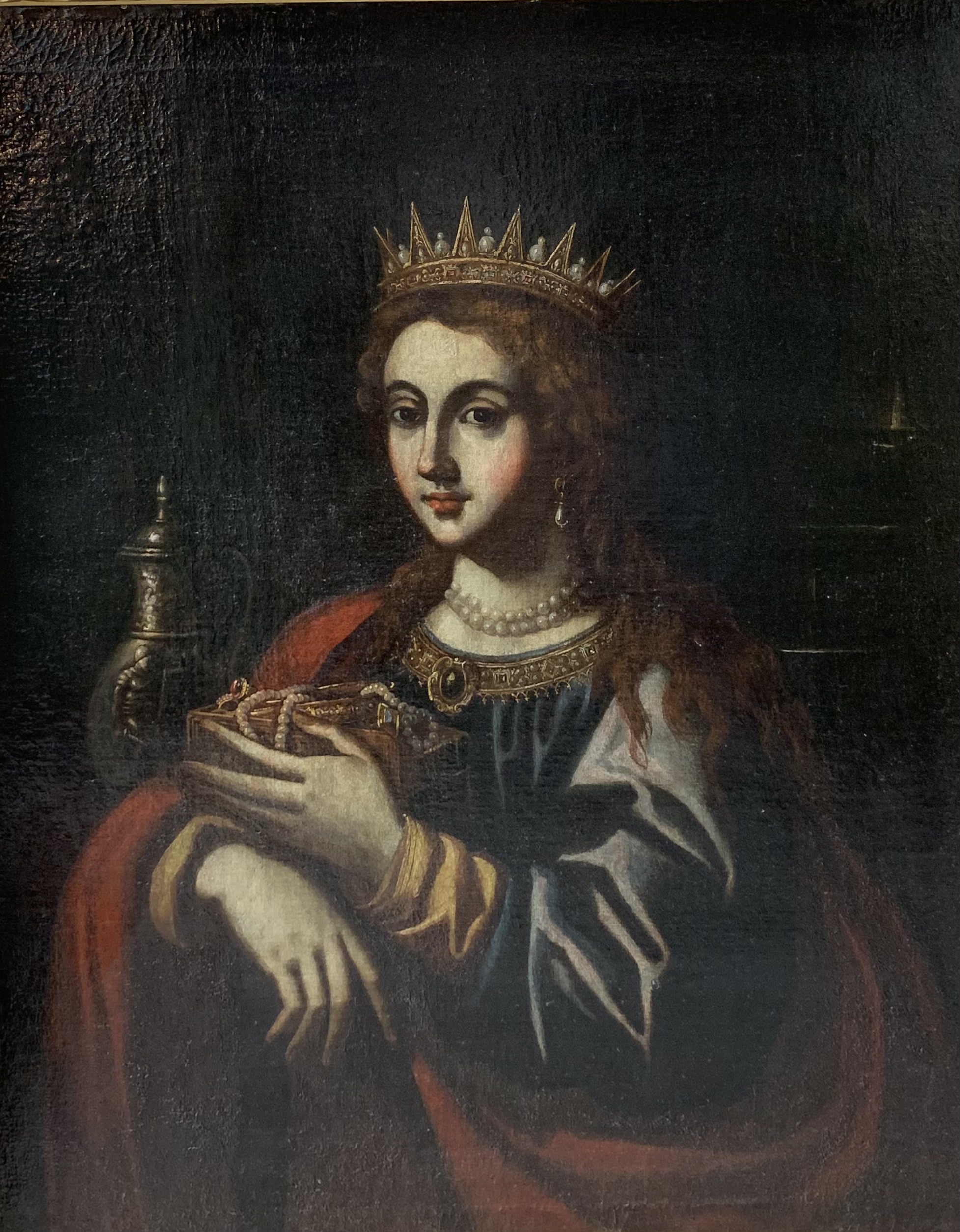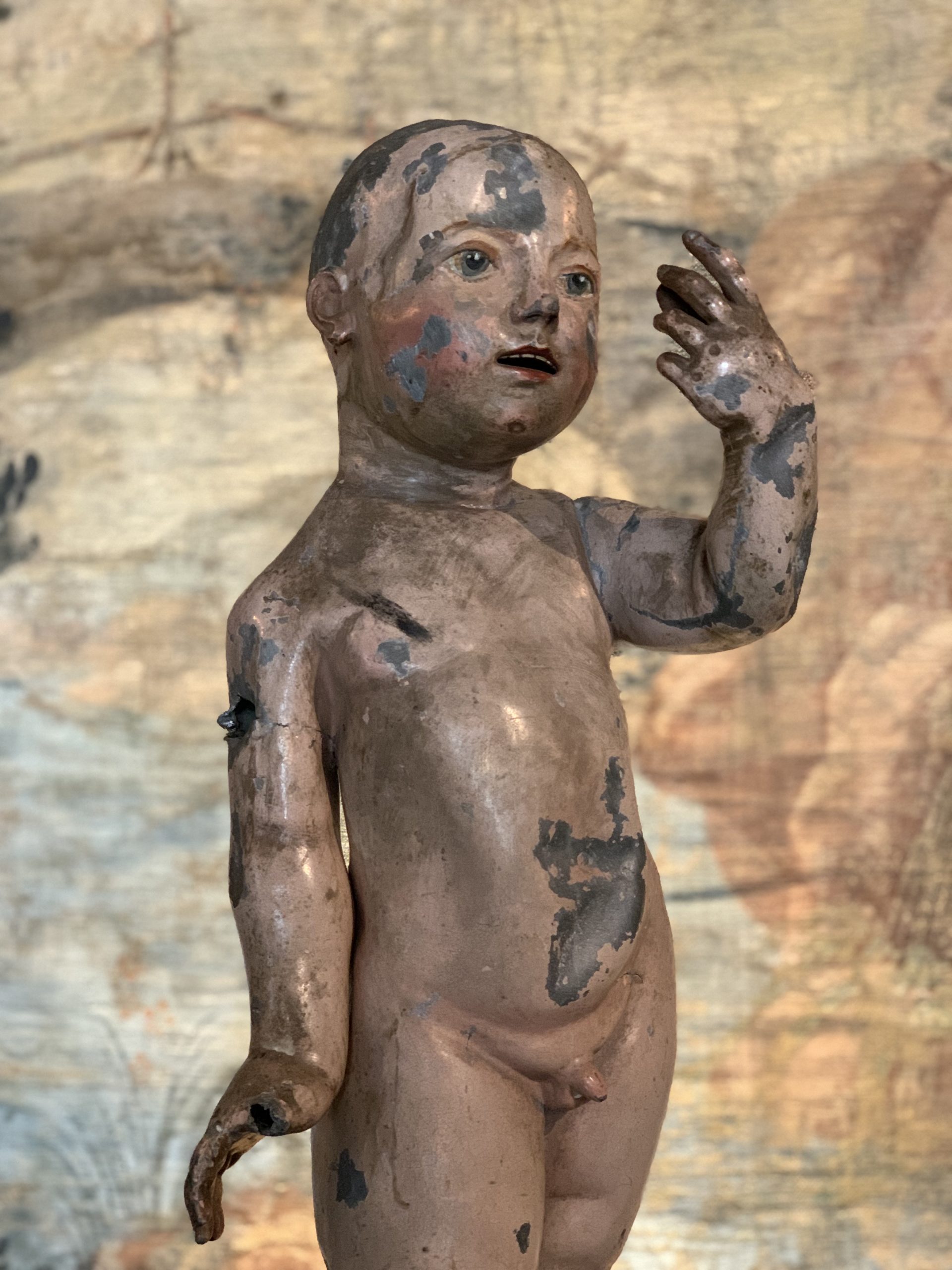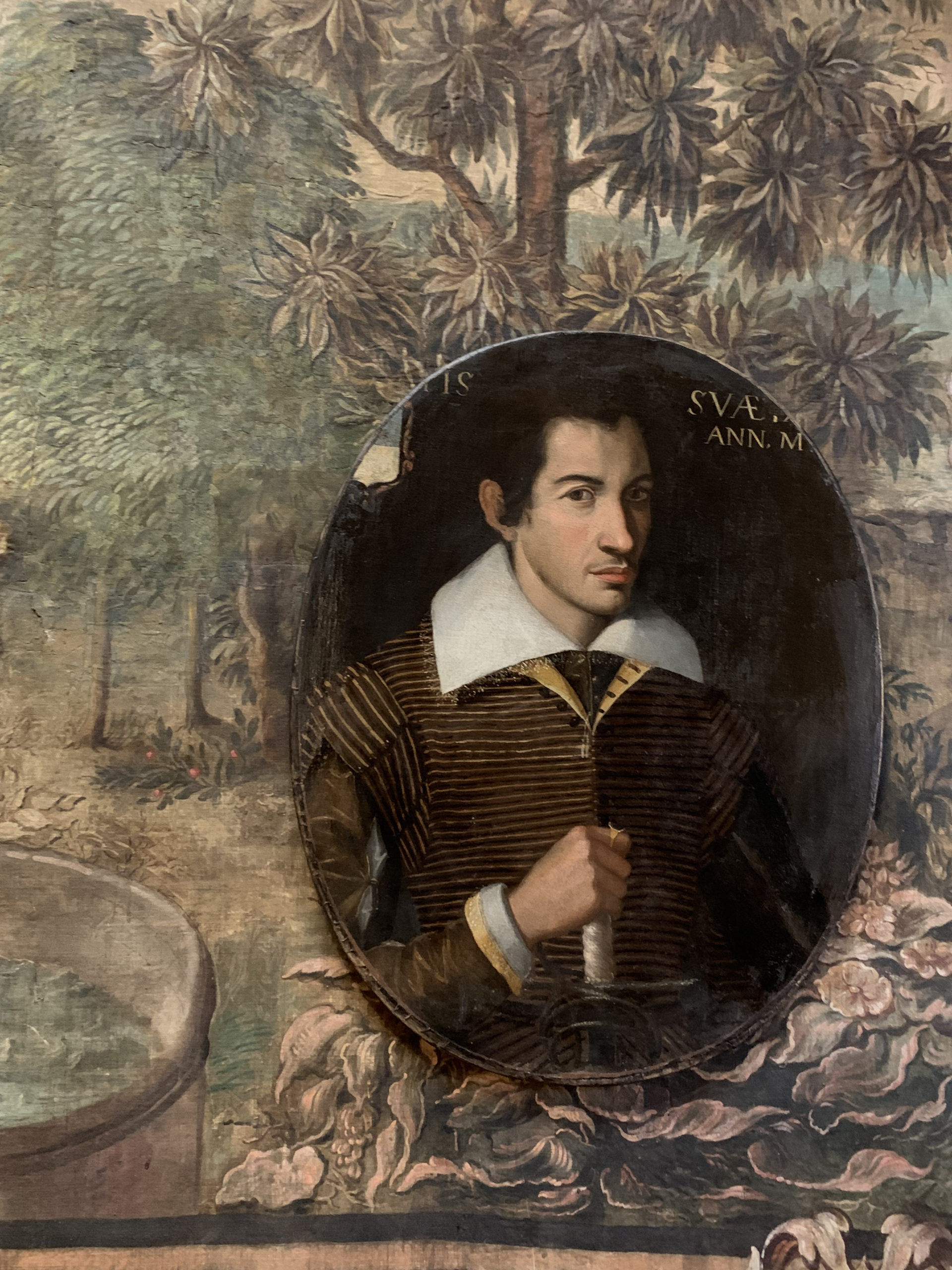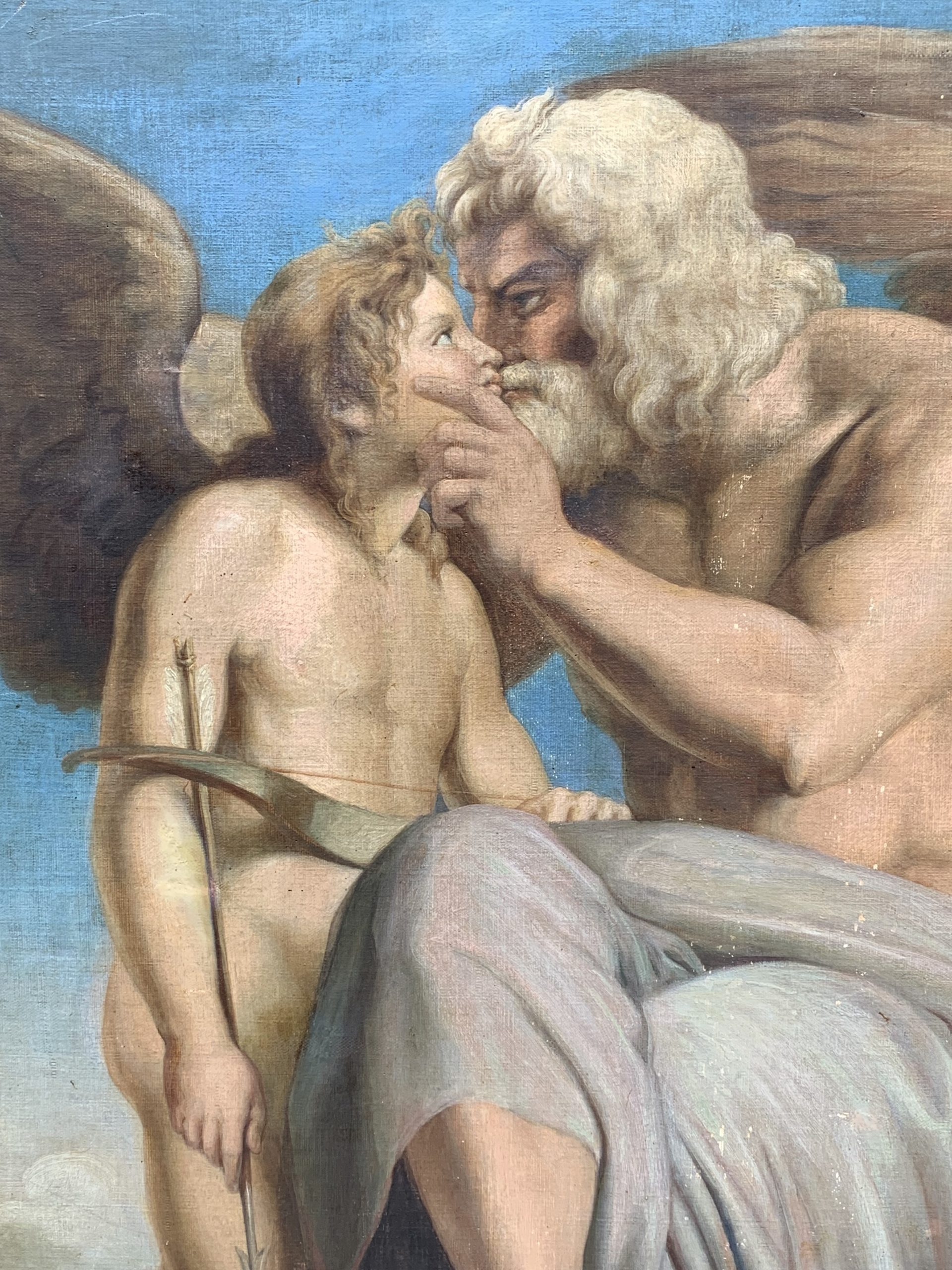Oil on canvas “Allegory of Vanity”. It is probably the vanity of wealth and power whose attributes are visible (money, jewels, weapons (warrior in armor represented on the pitcher), crowns, sceptres…)
Oil on canvas of a young English girl.
Portrait on landscape background.
English school
First part of the 19th century
The lead casts of the “Jesus Child” are very rare objects, they are normally found in wood.
17th century
Spain
Oil on canvas representing a young girl holding a bouquet of flowers.
Important frame in gilded wood.
France
Circa 1730
Oil on canvas representing a man with a severe and dark look.
Spain
Late 16th century
Oil on canvas representing the allegory of sight.
This painting is actually composed of two paintings attached and relined. Was it a diptych or a series of several paintings, two of which would have been joined together?
Oil on canvas representing Jupiter warning Eros against Psyche.
This painting is a 19th century copy of the ninth scene from the loggia of Psyche in the Farnese Gallery in Rome, completed in 1517 by Raphael and his pupils.
Psyche in walnut burl.
High quality psyche in walnut covered with walnut burl.
Elements in ciselled bronze.
This psyche is characteristic of the shift from Art Nouveau to Art Deco.
Console in polychrome sculpted wood, with 4 arched legs, with acanthus leaves and flowers patterns, faux marble patina on the top typical of Italian furniture. XVIII century
Lucca, Italy
Pauline doll, German Nuremberg cardboard box with its original clothing.
Sulphide eyes.
Circa 1830
Germany










